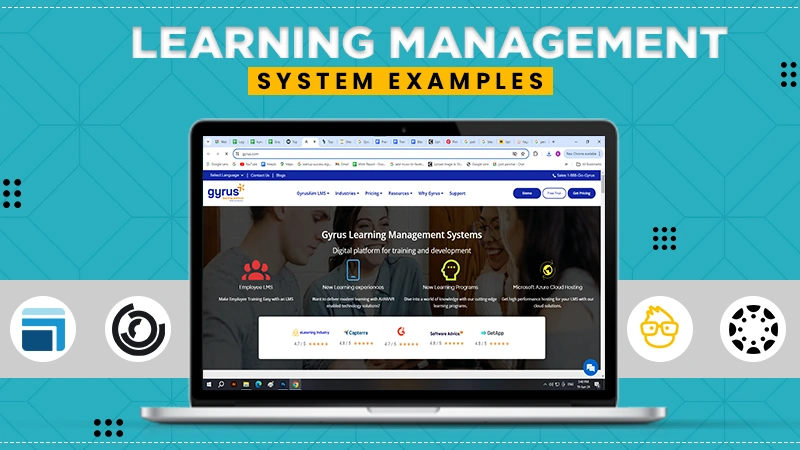
Technology has revolutionized the way we can keep track of our work and progress. The learning outcomes and the process can easily be monitored, which creates room to identify problems.
In large industries with a large workforce, it is difficult to track and provide necessary training while keeping track of them. To deliver successful training, strong management is required, which is where the Learning Management System (LMS) comes into play.
In this article, we will learn more about learning management system examples and how precisely they meet the needs of different industries.
What is a Learning Management System?
A learning management system enables you to design, deliver, and track training courses and programs. It serves as a central hub for online learning and training, making it easier for educators, trainers, and organizations to manage educational content and monitor the progress of their learners. The usage and features vary from software to software, as there are many LMS options to choose from.
An LMS can be used for internal staff training as well as external training for clients or partners. The training techniques you use will determine which LMS best fits the demands of your company.
Moving further, let’s discuss some examples of LMS that cater to different industries according to their requirements.
Read More: What is Laissez-faire Leadership? Meaning, Examples, Benefits, and More
22 Best Learning Management System Examples
There are several types of learning management software, such as cloud-based, open-source, and proprietary LMS, which is a code-based system. We have compiled a list of top-tier LMS software for you to choose from.
Gyrus

Gyrus’s comprehensive training and compliance solutions make it a standout in the field of employee growth. The primary goal of the organization is to empower its employees through focused education and effective performance management. Gyrus goes above and beyond conventional training, fostering a climate of ongoing development and advancement for professionals.
Skilljar

Skilljar has proven its presence in almost every industry by providing comprehensive features and a user-friendly interface. This LMS is a great way to organize and provide compliance, partner, and customer training.
Skilljar encourages users to consume learning resources by offering an alluring and customizable interface. It offers several writing options, extensive data and analytics, and an integrated certification engine.
360Learning

360Learning is one of the best learning management systems, and it is an excellent choice for organizations that want to manage and provide both external training (such as partner enablement and customer training) and internal training to their employees. It is best suited for those looking for a hybrid platform as it provides an all-in-one learning system that incorporates collaborative learning with the capabilities of an LMS, Academies, and LXP.
Moodle
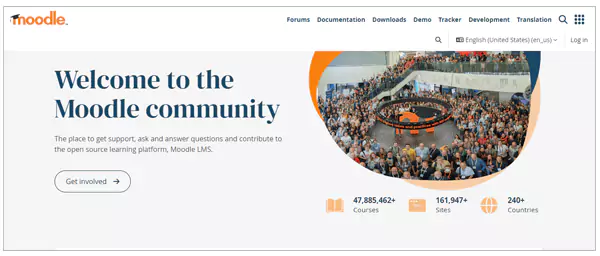
Moodle is best suited for teachers who teach students in grades K–12. It is meant to give teachers, administrators, and students access to a cohesive, secure, and strong platform for customizing learning environments.
Litmos
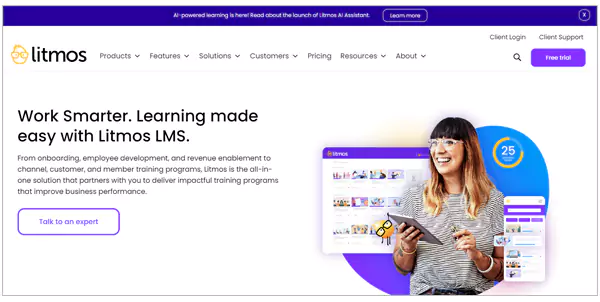
Litmos is a cloud-based learning management system that offers an intuitive professional learning and development platform. It is most appropriate for corporate training and courses.
Canvas
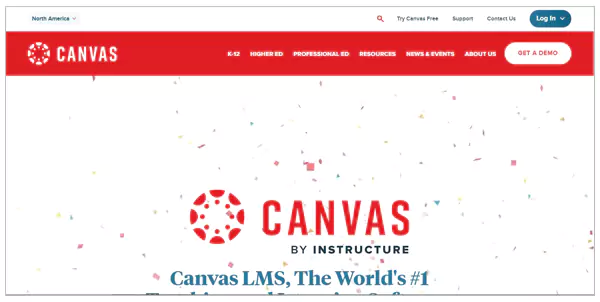
Canvas is another extensive example of a learning management system used by educational institutes. It helps to manage and access the course materials offered online, as well as to communicate about learning objectives and skill improvement.
SkyPrep
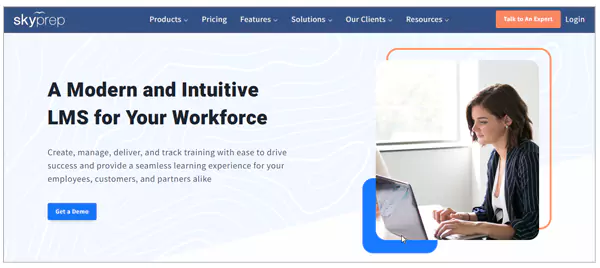
SkyPrep offers a simplified interface with virtual classroom functionality. With its Virtual Classroom feature, the learning and development department’s course management team can design, organize, and schedule online training. In addition to SCORM compatibility, it includes features for daily work automation.
Docebo
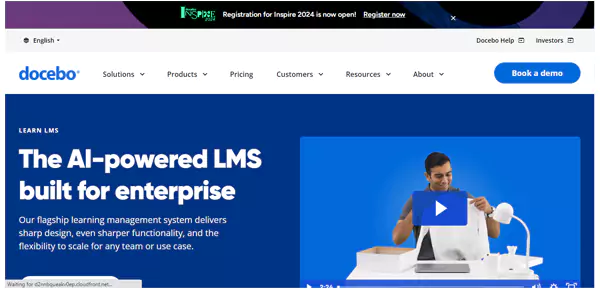
Docebo is another suitable software for course and skill development because it allows trainers to track each step. It is best at providing a user-friendly interface that can also be operated by novice trainees. Additionally, it also features some AI-powered tools that help trainers automate certain processes.
D2L Brightspace

Moving further with the examples of learning management systems, another suitable software to cater to the needs of the education industry is D2L. D2L Brightspace LMS, a cloud-based software package, is used by corporations, higher education institutions, and schools for online and blended learning.
Schoology
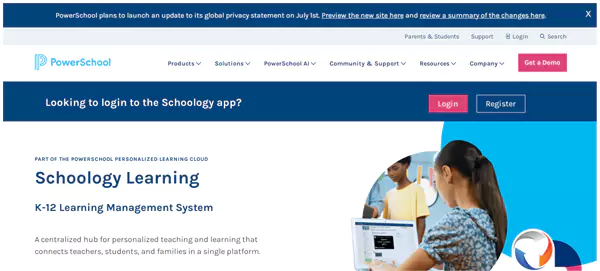
Many LMSs lack the personal touch and don’t facilitate resource sharing.
Using the web-based learning management system Schoology, educators can design and assign traditional and innovative assignments.
WorkRamp

If you’re looking for a low-budget LMS with extensive features, WorkRamp might be the best option out there. It is an LMS solution that works well for small to medium-sized businesses since it has features that improve workforce performance and engagement while cutting down on training expenses. For instance, you may easily produce statistics and display the impact on sales by using the dashboard tool.
Thrive
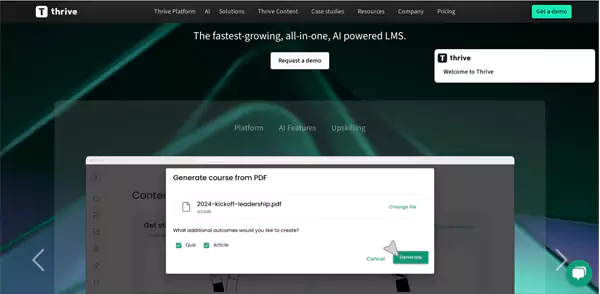
You can improve your training initiatives with the simple drag-and-drop functionality and AI features of Thrive. It assists you in tracking compliance, monitoring reports, and calculating completion rates. It also allows you to use dashboard automation and design organized learning routes.
Quizlet

Quizlet is a platform where you can test students’ knowledge in the form of quizzes. This is the best platform for teachers because it allows them to check students’ progress in real-time with a graphical representation. With a fun and user-friendly interface, Quizlet Live is one of the most desirable and loved platforms.
Mentimeter
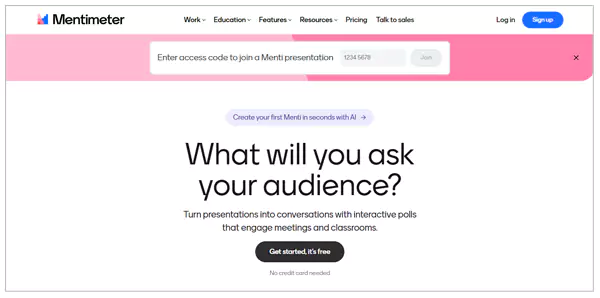
The Mentimeter is particularly suitable for presentation and conducting online quizzes like Quizlet Live. You can host a maximum of fifty student sessions each month and make unlimited presentations with any kind of question as a free user.
RiseUp

RiseUp makes it simple to establish personalized online learning environments with users on partnered platforms such as Microsoft Teams that are linked to your platform and specialized training resources. This enables self-contained learning environments that can be customized to meet your needs.
Blackboard Learn

Blackboard Learn was developed to facilitate teaching in academic settings. It may be accessed via mobile devices and seamlessly integrates with student information systems.
Kajabi

One notable LMS example for creating and selling online courses is Kajabi. It simplifies entrepreneurs’ journeys by removing technological obstacles and providing best practices for starting online enterprises.
CYPHER
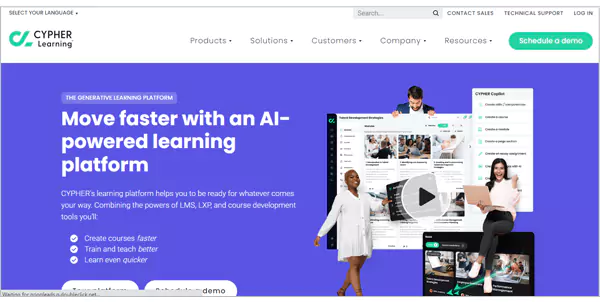
CYPHER is another educational LMS software example. It streamlines, simplifies, and helps you save time and money by providing a single platform with three functions. Learning management system (LMS), learning experience platform (LXP), and artificial intelligence (AI)-enabled content creation—
Tovuti
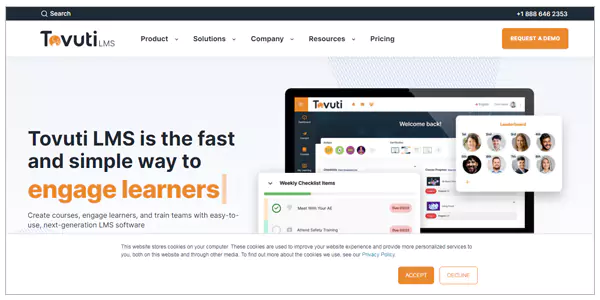
Tovuti, an LMS designed with people in mind, boosts productivity for both users and administrators by making learning enjoyable and administration easy. Make courses using AI in a matter of seconds. Use memory games, interactive films, and over 40 other gamification tools to boost student engagement. Tovuti offers a comprehensive learning solution because of its focus on blended learning and content management.
Masteriyo
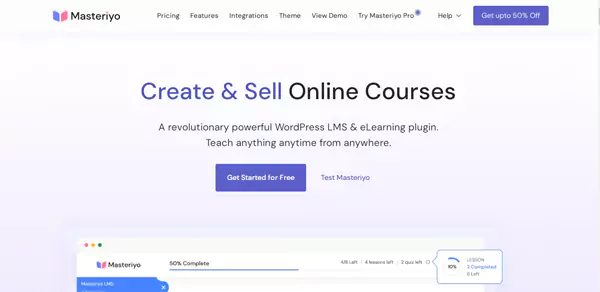
Moving further on the list we have Masteriyo. Another course creation LMS allows you to make a course without flipping between pages which saves time and effort.
LearnDash

Another example of the learning management system is LearnDash which concentrates mostly on content delivery optimization.
You may enhance your course with extra materials like gamification, group learning, automatic notifications, and more with this well-liked LMS.
In addition, it supports SCORM, xAPI, HTML5, audio, video, pictures, and SWF files. The best part is its enhanced quizzing features also comprise eight different kinds of questions.
GoSkills
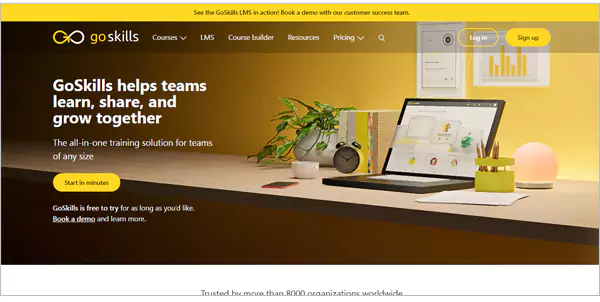
GoSkills is a mobile-friendly, cloud-based software that makes training management simple. Its features make it simple to set up and implement, allowing you to provide every student a uniform experience.
So these were some major examples of learning management system software. Even Google Classroom can be considered an LMS suitable for educational institutes.
Read More: Top 10 Best Work-from-Home Internship Opportunities!
Who Needs an LMS Software?
LMS platforms are widely used in the corporate sector to provide continuous training to newly hired employees and ensure industry compliance. Based on the type of requirement, this software can be integrated anywhere, such as:
- NPO: LMS can be used to train volunteers on procedures, policies, and specific skills needed for various roles. They can use this system to educate their members about the organization’s mission, values, and programs.
- Freelancers: Most of the unfruitful tasks are outsourced to freelancers. Organizations can provide training to their selected personnel on specific tools, methodologies, or systems.
- Health Sector: Interns and newly graduated doctors are required to constantly practice and work with highly experienced doctors so they can be ready for the highly dynamic environment of health. Hospitals and clinics use LMS to train healthcare professionals on the latest medical practices, compliance, and patient care.
- Customer: Product training allows you to build a community of experts who know, value, and adopt your products. Many complicated software or devices require organizations to train their customers so in such cases LMS can be helpful.
As a result, the learning management system can be used in almost any industry, depending on the requirements and needs. Furthermore, during COVID-19 many schools adopted this method for distance learning. They used LMS to create interactive lessons, manage assignments, and provide a blended learning experience.
Read More: 13 Best Tips for Writing Professional Emails That Leave an Impact on Readers
Benefits of Learning Management Software
Integrating LMS has lots of advantages, as its user-friendly interface, flexibility, and robust features allow trainees to grasp knowledge effectively.
Saves Time
An LMS streamlines your training process in comparison to traditional training. Many platforms are compatible with various devices, facilitating learning on the go. Students only need to sign in to the platform to finish their courses from any location. Both the trainer and the trainee can save a significant amount of time.
Flexibility
Administrators can design personalized learning paths for individuals or groups, ensuring that training meets their specific needs and objectives. Features such as discussion forums, chat rooms, and video conferencing enable collaborative learning and real-time communication among learners and instructors.
Great ROI
Investing in your employees is always a good idea because they will return twice as much as you did. Employee development through comprehensive training programs increases job satisfaction and loyalty. Well-trained employees feel valued and are more likely to stay with the company, reducing turnover costs.
In the long run, it contributes to a better return on investment and better-trained employees are more capable of handling tasks and challenges, leading to higher productivity and better business outcomes.
Better Insights
One of the most significant benefits of using an LMS is the invaluable training data it provides. Reports on exam completion rates, training records, course progress, and much more will be accessible to you.
The features of LMS vary from software to software and choosing a random software may not be ideal. So, let’s learn how to choose the learning management software that best meets your needs.
How to Choose a Suitable LMS For You?
As mentioned above, not all LMS software caters to all your needs. Whether you want to develop your employee’s hard skills or soft skills, each software serves a purpose. Identifying the best suitable software according to your organization is necessary to save you time and money.
These are some platforms that can help you filter out the best LMS software for you:
G2
G2 is an online review platform that keeps a record of all available software on the market. Users can read reviews, compare features, and get insights from real users to make informed decisions about the best LMS software for their needs.
Capterra
Just like G2, Capterra is another platform where you can compare software based on reviews and features. However, the major problem with these platforms is there are a lot of paid reviews that are not authentic. That takes us to the next best alternative to find your suitable LMS software.
Directly Contact Industry Specialists
You can directly contact experts or organizations that have integrated learning management systems. This would be more reliable and clear as the experts would be able to guide you and allow you to select the software according to your needs.
By exploring these platforms and consulting with industry specialists, you can effectively narrow down your options and choose an LMS that best fits your organizational needs.
Final Thoughts
There are now 73.8 million learning management system (LMS) users globally. According to research by 360Learning, the learning and development (L&D) industry is projected to generate $12.48 billion in revenue by 2024.
LMS platforms provide learners with access to educational content anytime and anywhere, facilitating a more flexible and inclusive learning environment. Additionally, it allows for the customization of learning paths to suit individual learner needs, enhancing engagement and retention.
By offering flexibility, scalability, and cost-efficiency, along with advanced analytics and personalized learning experiences, LMS has indeed proven to be a game changer, transforming how organizations approach learning and development.
Read Next: 13 Best Free Textbooks Online Websites (2025): Read Books for Free
FAQs
Ans: It ensures the successful implementation of courses or online training, which improves the learning experience.
Ans: LMS has been a game-changer, it allows companies to monitor, assess performance, and create assessments. It has significantly streamlined the learning process and improved the overall training and development experience.
Ans: Trainers are required to load up necessary training material, assignments, and quizzes. After that trainees are required to complete the training material as per guidance.
Ans: Google Classroom can be considered as LMS but the features and functionality are limited.
Sources:
Best Learning Management System –
ForbesLearning Management System –
Harvard